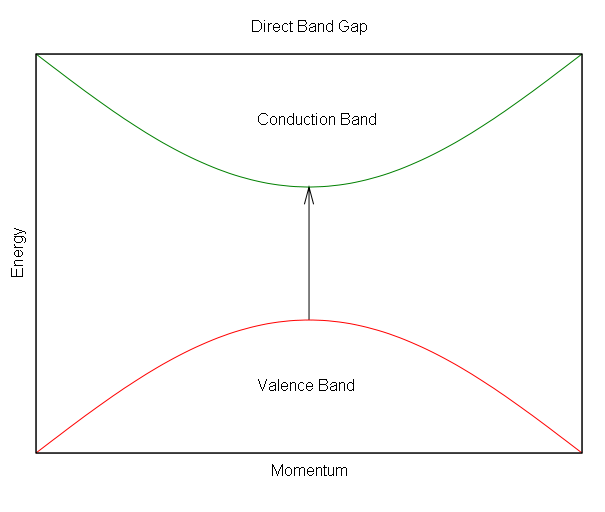|
|
Energy vs. momentum for a semiconductor with a direct band gap, showing that an electron can shift from the lowest potential in the conduction band (green) to the highest potential in the valence band (red) without a change in momentum. (*) In semiconductor physics, a direct bandgap means that the minimum energy of the conduction band lies directly above the maximum energy of the valence band in momentum space. In a direct bandgap semiconductor, electrons at the conduction-band minimum can combine directly with holes at the valence band maximum, while conserving momentum. The energy of the recombination across the bandgap will be emitted in the form of a photon of light. This is radiative recombination, also called spontaneous emission. In indirect bandgap semiconductors such as crystalline silicon, the momentum of the conduction band minimum and valence band maximum are not the same, so a direct transition across the bandgap does not conserve momentum and is forbidden. Recombination occurs with the mediation of a third body, such as a phonon or a crystallographic defect, which allows for conservation of momentum. These recombinations will often release the bandgap energy as phonons, instead of photons, and thus do not emit light. As such, light emission from indirect semiconductors is very inefficient and weak. There are new techniques to improve the light emission by indirect semiconductors. See indirect bandgap for an explanation. The prime example of a direct bandgap semiconductor is gallium arsenide—a material commonly used in laser diodes. See indirect bandgap for an explanation of the connection between bandgap offset and light emission. Retrieved from "http://en.wikipedia.org/" |
|


